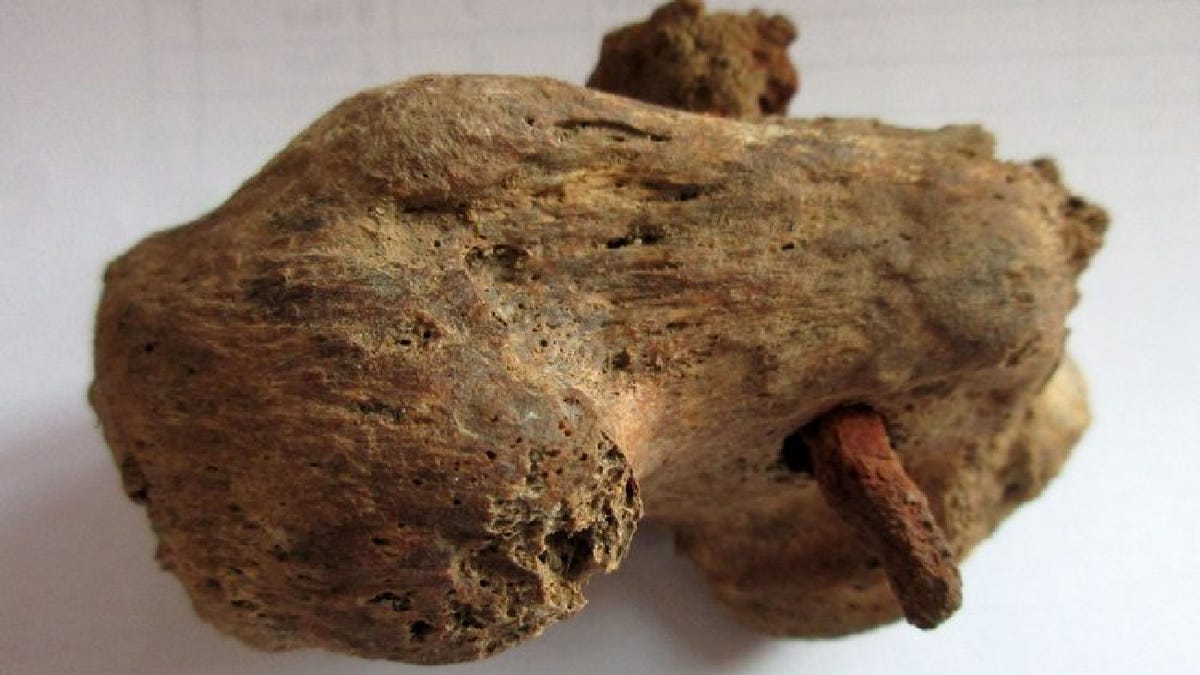Skeleton with nail in heel offers evidence of Roman crucifixion
Most crucifixion victims were bound with rope, so this is a rare find.

This 1,900-year-old heel bone shows an intact nail, and likely reveals that the man was crucified.
There's no doubt that crucifixion was a horrible method of execution. But historians report that most crucifixion victims were bound with rope to a cross, not nailed to it. Archaeologists in Cambridgeshire, England, came across a rare discovery during an excavation of a Roman roadside settlement -- they found a nearly 1,900-year-old skeleton with a nail through its heel, and crucifixion with nails seems to be the only explanation.
The skeleton was that of a man around 25 to 35 years old, according to a statement from Albion Archaeology, which made the discovery. His remains showed signs of poor dental health, arthritis and thinning on his lower legs, indicating he may have either had an infection or inflammation or been shackled.
"Well it's the first time a skeleton has been excavated archaeologically that anyone has found a nail in, so it's not the sort of thing you're looking for," project manager David Ingham, told The Guardian. "We know a reasonable amount about crucifixion; how it was practiced and where it was practiced and when and so on from historical accounts. But it's the first tangible evidence to actually see how it worked."
Twelve other nails were found around the skeleton, but the 13th had passed through its right heel, and there were signs of a shallow second hole as if the executioners had failed with their first attempt to pierce the bone.
"While this cannot be taken as incontrovertible proof that the man was crucified, it seems the only plausible explanation -- making it at most the fourth example ever recorded worldwide through archaeological evidence," according to the statement from Albion Archaeology.

